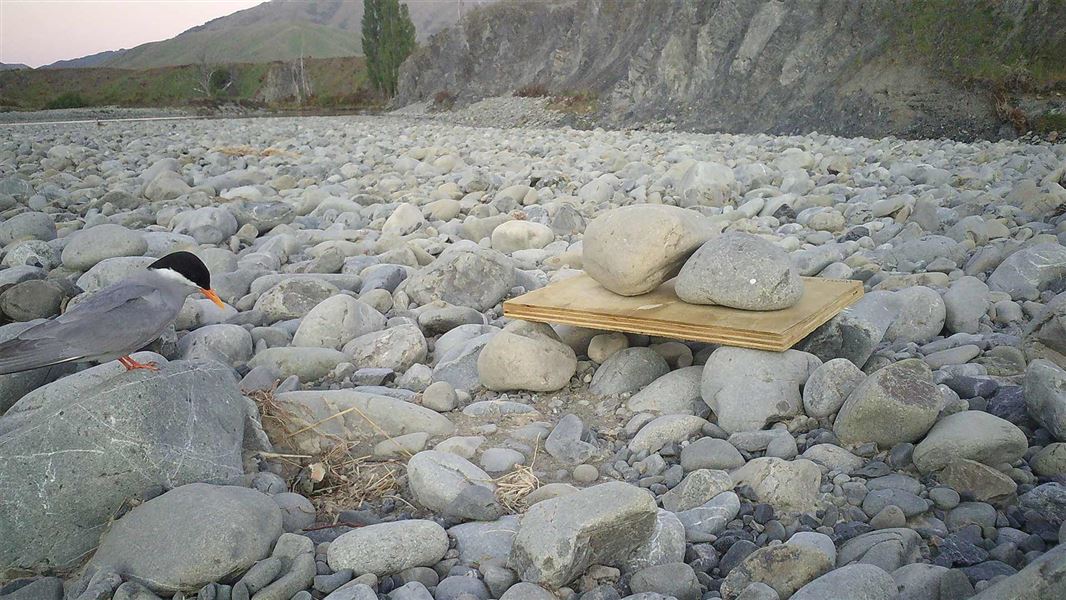Archived content: This media release was accurate on the date of publication.
Date: 06 December 2024
It’s a stark reminder of the impact introduced predators like feral cats have on New Zealand’s vulnerable native wildlife, especially during breeding season.
Predator control, island enhancement for nesting, and bird monitoring has been undertaken in the area for about a decade. The project is funded by Canterbury Regional Council (Environment Canterbury), DOC and Toitū Te Whenua Land Information New Zealand (LINZ), and much of the work is carried out by Wildlife Management International Limited.
DOC South Marlborough Senior Biodiversity Ranger Pat Crowe says a single male feral cat reached a large island with 95 nests, eating several adult birds, chicks, and eggs, and disturbing the colony to the point where almost all nests have been abandoned.
“The devastating incident has destroyed the largest colony on the river despite extensive predator control in the area. It highlights how difficult it is to trap feral cats, which are intelligent and wary.
“The timing is particularly bad as most nests had chicks, or eggs that were about to hatch, which means they won’t have the time or energy to nest again this season.
Pat Crowe says it’s a real kick in the guts after all the work that’s been put into protecting these threatened birds, and the steady gains made over the past decade.
Canterbury Regional Council (Environment Canterbury) Principal Biodiversity Advisor Frances Schmechel says it’s essential the work continues as Canterbury provides vital habitat. About two-thirds of their nesting habitat occurs in the braided rivers of this region.
Toitū Te Whenua Land Information New Zealand (LINZ) Biosecurity Manager Tracey Burton says the incident highlights the importance of predator control in helping native species have a fighting chance.
“It’s sad to hear that one feral cat has decimated nearly an entire colony of these special birds that we’re all working so hard to protect. It’s a horrible reminder of the impact predators can have and why controlling their numbers is vital.”
Burton says LINZ is working closely with DOC and Environment Canterbury to control predators along the Waiau Toa/Clarence River and other braided rivers.
LINZ has been supporting predator control work on the Waiau Toa/Clarence River over the last five years.
Background information
Black-fronted terns are endemic and have a conservation status of “Threatened – Nationally Endangered”. They have a national population of 5-10,000 birds, which is declining.
Feral cats are opportunistic and skilled hunters, and among the top introduced predators across many New Zealand’s ecosystems. With their high prey drive, they have a major impact on native birds, bats and lizards. They can weigh up to 7 kg and measure up to a metre long (including the tail).
Braided rivers like the Waiau Toa are dynamic and globally rare ecosystems which face pressures from weed encroachment, introduced predators and land use changes, in addition to human disturbance.
Contact
For media enquiries contact:
Email: media@doc.govt.nz
